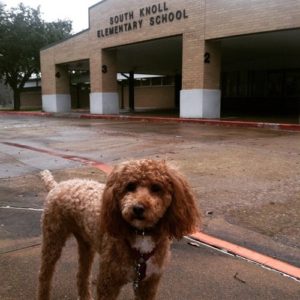Therapy Animals
 I have been a member of Aggieland Pets with a Purpose (APWAP) since August 2011. This amazing volunteer organization visits schools, hospitals, Texas A&M’s library during finals, assisted living facilities, and many other places with their animals. The handler team consists of a volunteer, who is usually the pet’s owner, and their evaluated and trained animal. Usually the animals are dogs, but that’s not always the case—currently there is an active cat and miniature horse in our group.
I have been a member of Aggieland Pets with a Purpose (APWAP) since August 2011. This amazing volunteer organization visits schools, hospitals, Texas A&M’s library during finals, assisted living facilities, and many other places with their animals. The handler team consists of a volunteer, who is usually the pet’s owner, and their evaluated and trained animal. Usually the animals are dogs, but that’s not always the case—currently there is an active cat and miniature horse in our group.
Harley, my miniature poodle, recently passed his APWAP certification test in August 2014. I’m often asked what makes a good therapy animal. Animals who participate in therapy must be comfortable in new places and enjoy meeting new people. They shouldn’t be overly afraid of loud noises, strange movements such as a wheelchair or a walker, or being surrounded by a crowd of people. They need to be comfortable being touched and handled all over their bodies and should have some basic obedience skills. This includes walking nicely on a leash as well as “sit,” “down,” and “stay.” “Leave it” is another command that can be very helpful, and may even save your dog’s life by preventing them from ingesting something dangerous like a dropped pill. After passing the APWAP test, members have three supervised visits to complete before making visits on their own.
 Harley and I have made visits to different elementary schools in the area, including South Knoll and Greens Prairie where we participate in story time. Afterwards the kids are allowed to pet Harley, but only if they first ask permission. It is important for children to learn to ask to pet unfamiliar dogs—not all dogs are as friendly as Harley.
Harley and I have made visits to different elementary schools in the area, including South Knoll and Greens Prairie where we participate in story time. Afterwards the kids are allowed to pet Harley, but only if they first ask permission. It is important for children to learn to ask to pet unfamiliar dogs—not all dogs are as friendly as Harley.
Both Harley and I really enjoy making visits and bringing smiles to people’s faces.
For more information about Aggieland Pets with a Purpose, please visit www.apwap.org.
